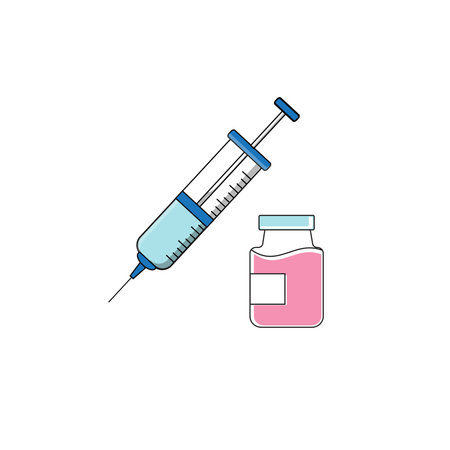1. Understanding Electrolysis: What It Is and How It Works
Electrolysis is a method of permanent hair removal that has been used for over a century. It works by targeting individual hair follicles with a small electric current, which destroys the follicle’s ability to produce new hair. Unlike temporary hair removal methods like shaving or waxing, electrolysis offers a long-term solution for those looking to eliminate unwanted hair.
How Does Electrolysis Work?
The process involves inserting a very fine probe into the hair follicle. A small amount of electrical energy is then delivered to destroy the follicles growth center. This prevents new hair from growing in that area. The treated hairs are then removed with tweezers.
Types of Electrolysis
There are three main types of electrolysis techniques used by professionals:
| Type of Electrolysis | Description |
|---|---|
| Galvanic Electrolysis | Uses a chemical reaction to destroy the hair follicle with direct current (DC). |
| Thermolysis | Uses alternating current (AC) to generate heat and destroy the follicle. |
| Blend Method | A combination of Galvanic and Thermolysis methods for more effective treatment. |
Why Is Electrolysis Considered Permanent?
The reason electrolysis is considered the only FDA-approved method for permanent hair removal is because it completely disables the hair follicle. Once a follicle is destroyed, it can no longer produce new hair. While multiple sessions may be required due to hair growth cycles, the results are permanent once all active follicles have been treated.
Who Can Benefit from Electrolysis?
Unlike laser hair removal, which works best on individuals with light skin and dark hair, electrolysis is effective on all skin tones and hair colors. This makes it an excellent choice for anyone looking for a permanent solution to unwanted hair, regardless of their skin type or hair color.
Electrolysis vs. Other Hair Removal Methods
When it comes to hair removal, there are plenty of options available. From shaving and waxing to laser treatments, each method has its own pros and cons. However, electrolysis stands out as the only FDA-approved permanent hair removal solution. Let’s compare electrolysis with other popular methods to see what makes it unique.
Electrolysis vs. Laser Hair Removal
Laser hair removal is often compared to electrolysis because both offer long-term results. However, they work very differently:
| Feature | Electrolysis | Laser Hair Removal |
|---|---|---|
| Permanence | Permanent | Long-lasting but not always permanent |
| Effectiveness on All Hair Colors | Works on all hair colors and types | Less effective on light or gray hair |
| Treatment Process | Treats one hair at a time | Treats multiple hairs at once |
| Pain Level | Mild discomfort | Mild to moderate discomfort |
| Side Effects | Mild redness, temporary swelling | Pigmentation changes, burns in rare cases |
| Best For | Anyone seeking permanent results | Darker hair on lighter skin tones |
Electrolysis vs. Waxing
Waxing is a quick and effective way to remove hair, but it doesn’t offer permanent results. Here’s how it compares to electrolysis:
- Pain Level: Both can be uncomfortable, but waxing involves ripping hair from the root, which can be more painful.
- Permanence: Electrolysis permanently destroys the hair follicle, while waxing requires ongoing treatments every few weeks.
- Candidacy: Waxing works on all skin and hair types but can cause irritation or ingrown hairs. Electrolysis is effective for everyone without these side effects.
- Cost Over Time: While waxing seems more affordable per session, the costs add up over time since you need frequent sessions indefinitely.
Electrolysis vs. Shaving
Shaving is one of the most common and accessible hair removal methods, but it comes with some downsides:
- Permanence: Shaving only cuts the hair at the surface, meaning regrowth happens within days. Electrolysis eliminates the follicle entirely.
- Irritation & Side Effects: Shaving can cause razor burn, ingrown hairs, and cuts, while electrolysis may cause mild redness that quickly subsides.
- Time Commitment: Shaving must be done frequently—sometimes daily—while electrolysis provides lasting results after a series of sessions.
- Smoothness: Electrolysis removes hair permanently for consistently smooth skin, whereas shaving leaves stubble as soon as regrowth starts.
The Bottom Line: Why Choose Electrolysis?
If youre looking for a truly permanent solution to unwanted hair, electrolysis is the best choice. Unlike other methods that require ongoing maintenance or only work on certain skin and hair types, electrolysis is effective for everyone. Though the treatment process takes time, the long-term benefits make it worth considering for those who want to eliminate unwanted hair once and for all.

3. The Electrolysis Procedure: What to Expect
Electrolysis is a precise and effective method for permanent hair removal, but if you’ve never experienced it before, you might be wondering what to expect during a session. Here’s a step-by-step breakdown of the process, including how to prepare, what happens during treatment, and how to care for your skin afterward.
Preparing for Your Electrolysis Session
Proper preparation can help ensure a smooth and comfortable electrolysis experience. Here are some key steps to follow before your appointment:
| Preparation Step | Description |
|---|---|
| Avoid Tweezing or Waxing | Refrain from plucking or waxing the hair in the treatment area for at least two weeks before your session. |
| Stay Hydrated | Drink plenty of water to keep your skin hydrated, which can improve comfort during the procedure. |
| Avoid Caffeine | Caffeine can make you more sensitive to pain, so consider limiting your intake on the day of your appointment. |
| Cleansing the Skin | Gently wash the treatment area before your session to remove any lotions, oils, or makeup. |
The Electrolysis Treatment Process
A standard electrolysis session typically follows these steps:
1. Consultation and Skin Assessment
Your electrologist will examine your skin and discuss your hair removal goals. They may also perform a patch test to determine sensitivity.
2. Cleansing and Preparation
The treatment area will be cleaned thoroughly to reduce the risk of irritation or infection.
3. Hair Removal Process
The electrologist will insert a fine probe into each hair follicle and apply a small electrical current to destroy the follicles ability to grow hair. You may feel a slight tingling or warmth during this process.
4. Duration of Treatment
The length of each session varies depending on the size of the treatment area. Small areas (such as upper lip or chin) may take 15-30 minutes, while larger areas (like legs or back) can take an hour or more.
Aftercare: Keeping Your Skin Healthy Post-Treatment
Caring for your skin after electrolysis is essential for optimal results and minimal irritation. Follow these aftercare tips:
- Avoid Touching the Treated Area: Keep your hands away from the area to prevent bacteria from causing irritation.
- No Makeup or Harsh Skincare Products: Refrain from applying makeup, perfumes, or harsh skincare products on the treated area for at least 24 hours.
- Soothe with Aloe Vera or Witch Hazel: Apply a gentle soothing agent like aloe vera gel to calm any redness or swelling.
- Avoid Sun Exposure: Protect your skin from direct sunlight and use sunscreen if you need to go outside.
- No Excessive Heat or Sweating: Avoid hot showers, saunas, and intense workouts for at least 24-48 hours post-treatment.
If you experience prolonged redness or irritation, contact your electrologist for advice. With proper care, electrolysis can provide long-lasting results and smooth, hair-free skin!
4. Is Electrolysis Right for You? Suitability and Effectiveness
Electrolysis is a highly effective method for permanent hair removal, but it may not be the perfect solution for everyone. Understanding who benefits the most from electrolysis, the types of hair and skin it works best on, and the factors that influence its effectiveness can help you determine if this treatment is right for you.
Who Benefits Most from Electrolysis?
Electrolysis is a great option for individuals looking for a permanent solution to unwanted hair. It is especially beneficial for those who:
- Have unwanted facial or body hair due to hormonal imbalances, genetics, or medical conditions.
- Want a long-term alternative to shaving, waxing, or laser hair removal.
- Are seeking hair removal on areas where laser treatment is less effective (such as light-colored or fine hair).
- Have sensitive skin that reacts poorly to temporary hair removal methods.
Hair and Skin Types That Respond Best
Unlike laser hair removal, which works best on dark hair and lighter skin tones, electrolysis is effective on all hair colors and skin types. However, some factors can influence how well the treatment works:
| Hair Type | Treatment Effectiveness |
|---|---|
| Dark, coarse hair | Highly effective; requires fewer sessions compared to fine hair. |
| Light-colored (blonde, gray, red) or fine hair | Still effective; may require more sessions since finer hairs are more difficult to target. |
| Sensitive skin | No pigmentation risk like laser; may experience mild redness or irritation after treatment. |
Factors That Influence Electrolysis Effectiveness
The success of electrolysis depends on several factors, including:
Your Hair Growth Cycle
The effectiveness of electrolysis is influenced by the natural growth cycle of your hair. Since electrolysis targets individual follicles in their active growth phase (anagen), multiple sessions are needed to treat all hairs effectively.
Treatment Consistency
A consistent treatment schedule is crucial for achieving permanent results. Skipping appointments can prolong the process and reduce overall effectiveness.
Your Skin’s Healing Process
The way your skin heals after each session affects results. Proper aftercare—such as avoiding sun exposure and keeping the treated area clean—can improve healing and prevent irritation.
The Skill of Your Electrologist
An experienced electrologist plays a key role in achieving successful outcomes. Choosing a licensed professional with proper training ensures safe and effective treatments.
If you’re considering electrolysis, consulting with a qualified electrologist can help determine if this method suits your needs based on your hair type, skin condition, and personal goals.
5. Safety, Side Effects, and Aftercare Tips
Electrolysis is a safe and effective method for permanent hair removal when performed by a trained professional. However, like any cosmetic procedure, it comes with potential side effects and requires proper aftercare to ensure the best results. Understanding what to expect can help you minimize discomfort and promote faster healing.
Potential Side Effects of Electrolysis
Most people experience mild and temporary side effects after an electrolysis session. These typically subside within a few hours to a few days. Here are some common side effects:
| Side Effect | Description | Duration |
|---|---|---|
| Redness | Mild irritation and redness around the treated area | A few hours to a day |
| Swelling | Slight swelling may occur, especially in sensitive areas | A few hours to two days |
| Tingling or Sensitivity | The skin may feel slightly tender or tingly after treatment | A few hours |
| Tiny Scabs | Small crusts may form as part of the natural healing process | A few days to a week |
| Pigmentation Changes (Rare) | Slight darkening or lightening of the skin in the treated area | A few weeks to months (usually temporary) |
How to Minimize Discomfort During Treatment
If youre concerned about pain or irritation during electrolysis, here are some ways to reduce discomfort:
- Numb the Area: Apply a topical numbing cream (such as one containing lidocaine) about 30 minutes before your session.
- Avoid Caffeine: Skip coffee or energy drinks before your appointment, as caffeine can increase sensitivity.
- Breathe and Relax: Tension can make discomfort feel worse, so try deep breathing techniques during treatment.
- Pain Relievers: Taking an over-the-counter pain reliever like ibuprofen before your session may help.
- Select an Experienced Electrologist: A skilled professional will use precise techniques to minimize pain and irritation.
The Best Aftercare Practices for Healthy Skin
Caring for your skin after electrolysis is essential for preventing irritation and ensuring smooth healing. Follow these steps for optimal results:
Avoid Touching or Scratching the Treated Area
Your skin may feel itchy as it heals, but avoid touching or scratching it to prevent infection and scarring.
No Makeup or Harsh Products for 24 Hours
If you had electrolysis on your face, avoid makeup, exfoliants, or alcohol-based products for at least 24 hours to prevent irritation.
Keeps the Area Clean and Moisturized
You can gently cleanse the treated area with mild soap and lukewarm water. Applying an aloe vera gel or fragrance-free moisturizer can help soothe the skin.
Avoid Sun Exposure and Heat Treatments
Your skin will be more sensitive after electrolysis. Stay out of direct sunlight, tanning beds, saunas, and hot showers for at least 48 hours.
No Intense Workouts for 24 Hours
Sweating can cause bacteria buildup in the treated area, leading to breakouts or irritation. Wait at least a day before engaging in strenuous exercise.
If Scabs Form, Let Them Heal Naturally
If tiny scabs appear, do not pick them. They are part of the natural healing process and will fall off on their own without leaving scars.
When to Contact Your Electrologist?
If you notice prolonged redness, swelling, pus formation, or persistent pain lasting more than a few days, contact your electrologist. These could be signs of an infection or an adverse reaction that needs attention.
Taking proper care of your skin after electrolysis will ensure smoother results and a faster recovery time. By following these tips, you can achieve the best outcome while keeping your skin healthy and irritation-free.


